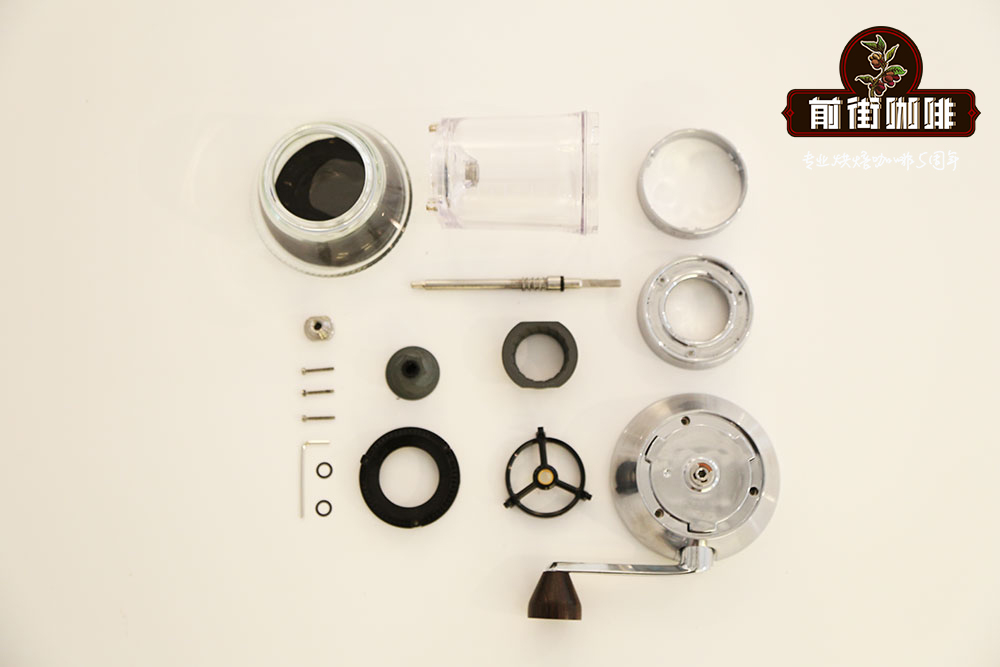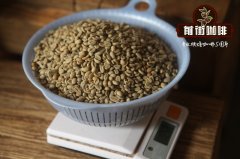How to choose the standard of cutter head replacement of coffee grinder the difference between flat knife and cone knife of coffee grinder

The bean grinder is one of the most important coffee equipment you have, whether you are a cafe owner or a coffee lover. Inferior machines can lead to uneven grinding size, which in turn leads to inconsistent extraction rates and cloudy cups.
The use of a cutter grinder will greatly improve the quality of coffee. Because cutters are ground not by shredding but by pressure, they produce less small fragments or chips than blade grinders. However, you can choose two different types of cutters: flat cutters and conical cutters.
So what's the difference between these cutters? How do they affect the accuracy and consistency of grinding and the risk of coffee residues? Should you buy a cone knife or flat knife plate bean grinder?
What is a cone knife and a flat knife?
Using a cutterhead grinder, coffee is ground by pressure as it passes between two surfaces or between the cutterhead.
The flat cutter head consists of two rings placed flat with each other. They are usually aligned horizontally and have sloping teeth. The distance between the rings determines the size.
However, for the tapered cutter head, the grinding is carried out vertically. One knife head sits inside the other. The outer cutterhead is a circular hollow ring with sharp teeth. Imagine a cupcake wrapper without a base, and there you are. The inner cutter head is a conical knife with a large bottom surface. If seen from above, it may be star-shaped or flower-shaped. This is because it has a channel to help the bean funnel. It also has small-angled teeth.
How does the shape of the cutter affect the quality of your coffee?
Ground consistency, retention and temperature-all of which affect the quality of espresso and filtered coffee. All of these are affected by the shape of the cutter head to some extent.
Grinding consistency
Marco Beltrame, a coffee trainer and technician at Dalla Corte, told me that it was difficult to use a cone cutter head to achieve the same grinding consistency as a flat cutter head. This is because of the way they are assembled.
"the biggest difference between the cone cutter head and the flat cutter head is in the assembly and construction of the coffee grinder," he said. " "in a tapered cutter head, perfect parallelism and perfect concentricity must be achieved, while for a straight cutter head, only parallelism is important. Therefore, it is easier to obtain better particle size uniformity. "
In fact, he thinks that the flat cutter head will always be better than the conical cutter head. The more perfect the parallelism is, the higher the accuracy of particle size measurement is. In a tapered cutter head, it is impossible to have perfect concentricity, because the lower cutter head must be installed on the motor shaft, so it must be dispersed.
In other words, difficulty in accurate alignment with the conical cutter head may lead to minor inconsistencies in grinding dimensions.
However, there is one thing that can lead to the consistency of flat cutter head grinding: heat preservation. Flat cutterhead grinders have a reputation for heating more every day than conical cutterhead grinders. This is because the cutter head needs more mechanical power.
Marco stressed that it depends on the way the grinder is made. "if you use the necessary technical precautions (such as appropriate ventilation and grinding speed) to make a coffee grinder with a flat cutter head, it can be very close to the cone temperature," he said. "
Citing the Dalla Corte cutterhead as an example, he told me: "A motor with a diameter of 65 mm and a motor of 1400 RPM is essential for higher circumferential speed and lower heat."
However, the excess heat can lead to problems with cheaper grinders.
Rosso Coffee Roasters's Cole Torode, who has won the Canadian barista championship many times, and Ambassador Dalla Corte Coffee, said to me, "if the grinder is overheated, it will change the consistency of the grinding size."
"as you spend your day in a cafe and the ambient temperature in the room starts to rise, you will feel that the temperature of the grinder will probably start to rise, and I think your lens will start to extract faster as the abrasives get hotter. Because they become more soluble."
This means that baristas who use flat cutter grinders will have to pay special attention to temperature. If it rises too much, they need to adjust the amount of espresso grinded.
Coffee retention and pollution
The coffee residue left in the coffee maker can lead to a change in the weight of dry coffee, thus changing your espresso extraction rate. Perhaps more worryingly, it can lead to pollution, mixing old ground with fresh ground.
Retention occurs when the ground coffee is glued to the surface of the grinder. Compared with the coffee cone knife, the flat cone knife head is more likely to happen because of how the coffee is taken out of the coffee machine.
If the cutter head is flat, push the coffee from the cutterhead kit to the side. This requires a lot of force, and to do so, the grinder's engine will rotate at a higher RPM. By contrast, the taper knife device requires less mechanical force because gravity helps grain pass through. This means that the risk of retention is lower.
However, Marco stressed that the retention of the flat angle grinder can be reduced "according to the construction of the grinding chamber and its outlet".
Convenient and easy to use
Ease of use usually has more influence on the design of the grinder than the cutter head, but there are some differences between the conical cutter and the flat shape.
Noise is probably the first thing you should pay attention to: the cone cutter head grinder runs at a lower RPM because gravity does a lot of work for them. As a result, they are usually quieter.
But, like most things, grinder manufacturers can take other measures to reduce noise. "to reduce grinding noise (on Dalla Corte machines), one cutterhead has six more cutters than the other," Marco told me.
As we said above, unless the temperature is well ventilated, the leveling cutter grinder may make more adjustments during the day as the temperature rises. Again, this is due to higher RPM.
It's not just the shape of the knife head.
The shape of the cutter head will affect the quality of the coffee, but this is not the only thing you are looking for.
"whether it's a surface grinder or a cone grinder, the workflow depends on how the grinder is manufactured, the diameter and design of the grinder, the motor and its speed, ventilation and the whole body," Marco said.
Please note that the grinder cutter head is specially designed for espresso or all kinds of drinks. Marco told me that Dalla Corte's cutter head is "about 300 pounds 450 microns", making it suitable for espresso, while some grinders are designed to be more flexible.
Some people also prefer ceramic or metal alloy cutters. Ceramic is harder than steel, which means the cutter head will last longer. But it's also more vulnerable. Small stones and other objects may eventually break it. Ceramics also absorb less heat-however, most of the heat generated during grinding is due to the crushing of RPM and coffee beans. In fact, there is almost no difference between ceramic and metal cutters. Most manufacturers choose metal.
Cone cutter head or flat cutter head: which is the best?
The answer is: it depends.
Generally speaking, the cutterhead is more consistent and more expensive. Depending on the model, they can also be noisy and will heat up quickly unless they are well ventilated.
By contrast, most cone cutters are quieter, cooler, cheaper, but inconsistent.
You need to determine which aspects are important to you. Are you running a specialty coffee shop with precision as the key? Or are you an early riser looking for a basic household grinder that won't wake up the rest of the family?
Remember, the cutter head is important, but it is not the only factor that determines the quality of the grinder. Is the machine well constructed? Is it suitable for the drink you want to make? If you need repair or replacement, can you use good support?
After finding the answers to these questions, you will be able to make the right purchase choice.
Important Notice :
前街咖啡 FrontStreet Coffee has moved to new addredd:
FrontStreet Coffee Address: 315,Donghua East Road,GuangZhou
Tel:020 38364473
- Prev

What is the effect of ambient temperature on coffee roasting? how to use the rate of environmental change to improve the baking curve
The environmental change rate is not as good as the rising rate, the bean temperature and the environmental temperature are better. But it is even as important, or even more important. It helps to predict the temperature of the drum, which in turn helps to maintain control during the baking process. What is ambient temperature? If you don't know the ambient temperature first, you can't understand the rate of environmental change. This is the temperature of the air in the drum of the baking machine measured using a thermocouple.
- Next

Coffee brewing | what is the difference between siphon coffee and hand-brewed coffee?
What's the difference between siphon coffee and hand-brewed coffee? Hand brewing coffee uses filtration, while siphon coffee combines soaking and filtration, which can actually highlight the flavor, but now popular boutique coffee often uses filtering to brew coffee, so let's first introduce hand brewing coffee. Hand-brewed coffee is a way of brewing coffee by filtration.
Related
- Beginners will see the "Coffee pull flower" guide!
- What is the difference between ice blog purified milk and ordinary milk coffee?
- Why is the Philippines the largest producer of crops in Liberia?
- For coffee extraction, should the fine powder be retained?
- How does extracted espresso fill pressed powder? How much strength does it take to press the powder?
- How to make jasmine cold extract coffee? Is the jasmine + latte good?
- Will this little toy really make the coffee taste better? How does Lily Drip affect coffee extraction?
- Will the action of slapping the filter cup also affect coffee extraction?
- What's the difference between powder-to-water ratio and powder-to-liquid ratio?
- What is the Ethiopian local species? What does it have to do with Heirloom native species?

